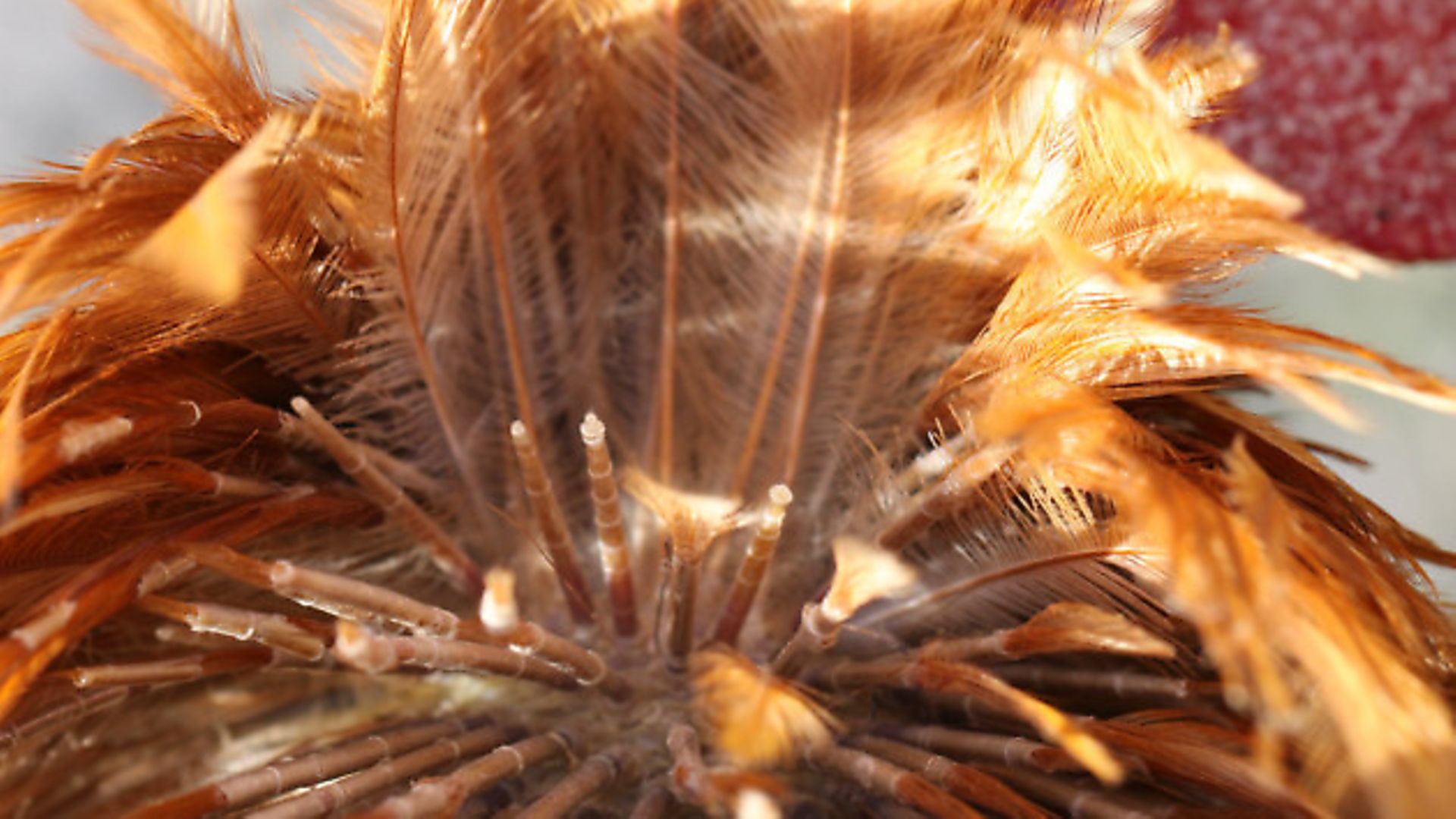Chickens lose feathers for various reasons. Julie Moore explains

At some point in time you’ll notice that one or more of your hens are missing some feathers — it happens within every flock. There are reasons for missing feathers; some are obvious whilst others require a bit of detective work to find the underlying cause. As feathers serve very important roles by providing protection and insulation for a hen’s body, it’s time to turn sleuth and investigate the mystery of the missing feathers.
Feather loss occurs during moulting — this is the natural process of shedding old feathers and growing new ones. The decreasing daylight hours in autumn normally triggers the moulting process during which time egg production ceases — it’s Mother Nature’s way of providing layers a rest period. Chickens moult in a certain order: starting at the head, then moving down the body from the neck, then chest, back, wings, backsides and tail. Some chickens will drop all their feathers at once and re-grow them quickly, whilst others take many months to complete their moult.
Moulting can also be triggered by a sudden change in normal lighting conditions or lack of food or water.
During moulting, chickens are susceptible to pecking from other hens as feathers re-grow. The emerging pin feathers contain a blood-filled vein that’s very appealing to others. A waxy casing surrounds each new feather and either falls off or is removed during preening. The feather within unfurls and the inner vein dries up.
Know the moulting patterns of your hens so that feather loss due to moulting is ‘normal.’ Be vigilant and segregate any bird with bleeding or damaged pin feathers.
A broody hen will pluck her own breast feathers to expose the moisture and warmth of her skin to the eggs. After the chicks hatch, she’ll go through a ‘broody moult’ as her hormones and eating and drinking routines return to normal.
Any broody that is not sitting on hatching eggs should be broken. New mothers should be fed chick crumbs, the same as the chicks. Higher in protein than layer feed, it will help supply the protein needed for feather re-growth.
Nutritional deficiency
A nutritional deficiency is the most common cause of feather pecking. A hen will start pecking out the small, sweet feathers around the vent, at the top of the legs and the base of the tail where it meets the body of other hens. In essence, she’s substituting what she’s lacking in her diet with keratin found at the base of the feather. Keratin is addictive and once hooked, it’s difficult to kick the habit. It only takes a nicked pull of a feather to draw blood. Chickens love the sight and taste of blood — they’ll turn into cannibals and, if left to their own devices, will peck a hen to death.
By providing a nutritionally complete feed, appropriate for their age and limiting the amount of treats, your hens should not crave any other nutrients.
Space issues
Chickens like to peck and scratch and by nature are territorial. When too many chickens are confined to too small a space, scratching opportunities are limited and attention turns to other hens in the form of relentless bullying and aggressive pecking. Establishing the pecking order can cause aggressive pecking as hens vie for position. Space is key to happy hens. The bare minimum is one square foot per bird if they have an outdoor run and four square foot per bird if they are confined to indoors. Do not overstock the space you have available. Any overly aggressive hens should be removed from the flock and kept in isolation for a few weeks which may lessen their dominance. Introduce new birds in an appropriate way according to your set-up to minimise stress and aggressive behaviour.
Parasites
Lice love to congregate at the base of feathers where they meet the skin, particularly around the vent, under the wings and on the head. Lice cause irritation and rapidly multiply leaving your hen defenceless save only for pecking her feathers and skin to seek relief.
Dust bathing naturally helps chickens to clean their feathers and eradicate lice and mites. Ensure hens have access to a dust bathing area that stays dry year round. Check regularly for signs of external parasites — if you discover an infestation, treat all birds and the coop.
Mating
Roosters can favour certain hens, paying them considerable attention. When a rooster mates, he balances himself on top of the hen by holding on to her neck feathers and standing on her back (treading). Over time, treading can result in bald patches on a hen’s back and missing neck feathers.
Maintain an appropriate rooster to hen ratio. Clip and file the nails and spurs of roosters to minimise feather and skin damage to hens. Segregate ‘favourite’ hens from the amorous attentions of roosters to allow feather re-growth. Hen saddles provide protection from treading — check under the saddle regularly for external parasites.
Having too few nest boxes can result in feather pecking as hens jostle for nest box space.
Install a ratio of one nest box for every four hens to avoid overcrowding. Make nesting areas private with dim lighting and hang nest box curtains for extra privacy.
Stress
Scientific research has shown that feather pecking and cannibalism are common in hens and rare in males. Offspring of hens who feather pecked are more inclined to show feather pecking behaviours than those from non-feather pecking hens. Feather peckers are generally more active than their non-feather pecking counterparts.
Most of the scenarios discussed are stress-related. As chickens don’t handle stress well, be mindful of the impact of any changes to their routine that might cause stress.
Summary
In most cases, it’s likely that you will be able to identify the reason why birds are missing feathers — sometimes it’s obvious and other times you’ll need to probe a bit deeper to find the culprit.
Image(s) provided by:
Archant







